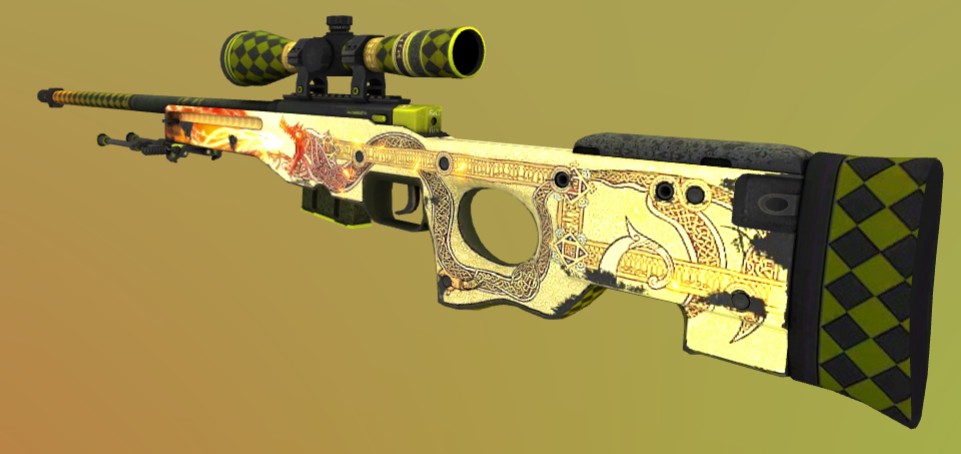CSGO skins were ahead of their time. If I had told you ten years ago that gamers could make a fortune by playing an online shooter, opening little digital cases, and selling what was inside, it might have sounded bizarre. But Valve’s FPS game was a trailblazer, forming the blueprint for what we now call the ‘non-fungible token,’ or NFT. Long before the bored apes, CSGO players were trading virtual items. Naturally, then, NFT collectors may be curious about investing in CSGO skins, but though they may seem similar, the two commodities are vastly different.
At first glance, NFTs and skins are almost the same. They’re both virtual, both traded online, and both have the seeming potential to make their owners some quick money. However, while NFTs are primarily for investment, CSGO skins are often traded among gaming enthusiasts who use and resell them.
Since CSGO skins are solely for entertainment and beautification within Valve’s game, they are ultimately also under Valve’s control. For example, recently, Valve converted all Doodle Lore skins to Duality after copyright claims, leaving some players with contraband floats. Buyers of the eye-popping Doodle Lore were in for a surprise when they woke up to find an antique version of Duality instead. That’s just an example of how much power Valve holds over Steam accounts and the skin market.

Any digitally savvy person would think twice before leaving $500,000 stagnant on their Steam account for months, knowing Valve is the ultimate boss. CSGO players – the owners of Counter-Strike skins – don’t truly, or at least fully, control what they own. Conversely, an NFT is purely an investment, protected by the top-notch Blockchain which ensures their security. The owner of an NFT has the exclusive right to transfer, sell, or trade the NFT to another party, as long as the transaction is recorded on the Blockchain.
CSGO skins are not non-fungible – they’re scarce
A very obvious difference is that CSGO skins are, in sharp contrast to NFTs, fungible. Valve rolls out similar skins in heaps, and it’s over to players to modify them through crafting or wear, earning a unique float. However, it’s possible to replicate a float of the skin – wear, stickers, and so on can alter a base skin, but each combination of wear, stickers, etc. can be replicated by another player, meaning that any CSGO skin can be duplicated, and none are truly unique.
NFTs, on the other hand, are never identical. Sure, you may see a similar bored ape, but a distinct smart contract identifier is where the actual money lies.
In a sense, CSGO skins are more profitable
CSGO skins aren’t precisely like NFTs, but they can be way more lucrative, at least for serial gamers. Imagine you buy a designer bag for $800, and shortly after your purchase, the manufacturer discontinues that particular design. 12 months later, thanks to scarcity, the bag’s now worth $900. Not only can you sell it for $100 in profit, but you’ve also had a year of getting to use the bag. Who says you can’t have your cake and eat it, too? The same is the case for CSGO skins.

CSGO skins have a purpose besides being a smart short-term investment. You can actually use the skins in-game, which reflects in a skin’s float value. An NFT by comparison has no purpose other than to either increase or decrease in value – you have your cake, and it might eventually be worth more or less than what you paid for it, but in the meantime, all you can do is look at your cake.
On the other hand, once a CSGO skin has passed its official release, that’s it: there’s no getting it through normal means. That’s what makes your CSGO inventory a potential cash cow. Even though they’re not technically investments, CSGO skins may offer solid returns owing to scarcity, which tends to increase over time.
Comparing CSGO skins to NFTs boils down to purpose. They’re not NFTs until they’re genuinely non-fungible and players own and control them outright. It’s unlikely Valve would let their skins trade outside of Steam’s world. As such, the two commodities remain very different, and fully melding one into the other would require a fundamental change in how CSGO skins are released, traded, and regulated, a change that CSGO players almost certainly won’t ever want.
Check out the Counter-Strike 2 system requirements that we’re expecting Valve to announce, as well as all there is to know about the Counter-Strike 2 release date. You might also want to tour all the Counter-Strike 2 maps being rebuilt in Source 2.
